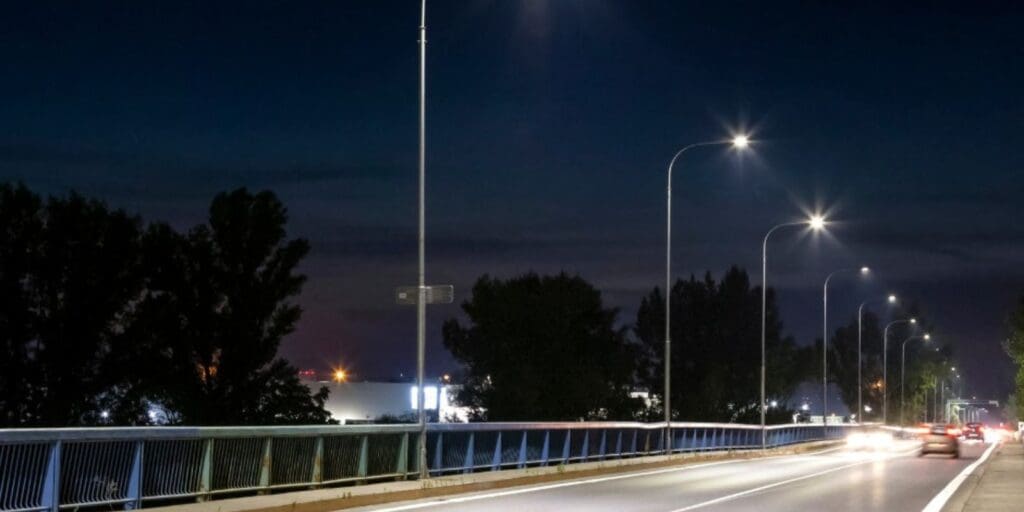A project which aims to cut the amount of energy needed to power Powys’ streetlights is on track with more than a quarter of the planned savings already made.
Powys County Council began a 10-year project in 2020 to more than halve its annual electricity usage for streetlighting by 2030, with more than a quarter of the total planned saving of 872,642 kWh per year already made.
This is equivalent to the amount used by 116 British households in a year, with the aim of eventually reducing it by the amount consumed yearly by 323 British homes.
The council was using 1,672,642 kWh of electricity to power its streetlights at the start of the project in 2020. This is now down to 1,360,572 kWh per year and will eventually be below 800,000 kWh per year by 2030.
The work involves reviewing where lighting is most needed – based on safety, social and environmental factors – and whether lights can be switched off or dimmed for part of the night or in rare cases be removed. At the same time, new columns, signs, LED lanterns and cabling is being installed, where needed, to make the streetlighting more affordable to run and maintain and to help reduce carbon emissions.
The improvements are also helping the council comply with dark sky and biodiversity measures and improve the safety of its streetlighting infrastructure which in some places is more than 50-years-old.
Work is currently being done to upgrade lighting in the towns and villages surrounding the Bannau Brycheiniog National Park in the south and around Newtown in the north, during the fourth year of the project.
“The Highways team working on this project are making brilliant progress,” said Cllr Jackie Charlton, Powys County Council’s Cabinet Member for a Greener Powys, “and I’m really pleased that we have been able to share this with the public during Wales Climate Week. This is all about saving carbon and is an incredible way of achieving that.
“In the last decade we have also helped the Bannau Brycheiniog National Park and Elan Valley achieve dark sky status and we are now in the process of helping Presteigne and Norton achieve dark sky community status: a first in Wales and England.
“We also liaise with wildlife groups to ensure our lights don’t adversely affect bat routes or otter feeding areas and specifically use a colour temperature of 2200K for our lanterns so, they are nature friendly and dark sky compliant.”
The council first began work to reduce its streetlight energy consumption in 2008, when it was using 6,600,000 kWh of electricity each year – the current equivalent of 2,444 British homes. It is now using less than a quarter of that amount at 1,360,572 kWh per year.

